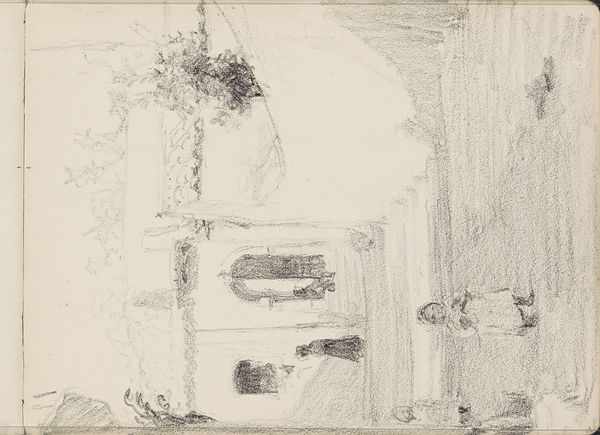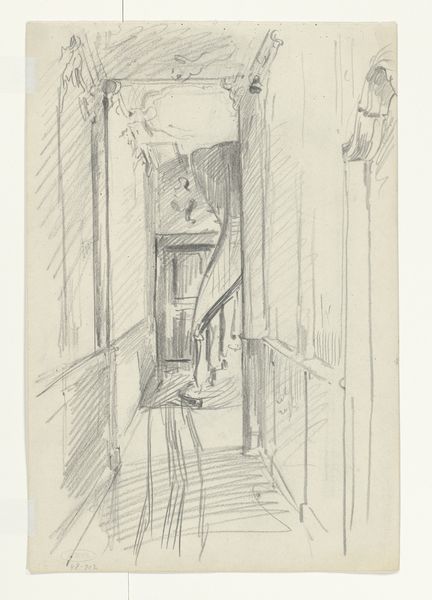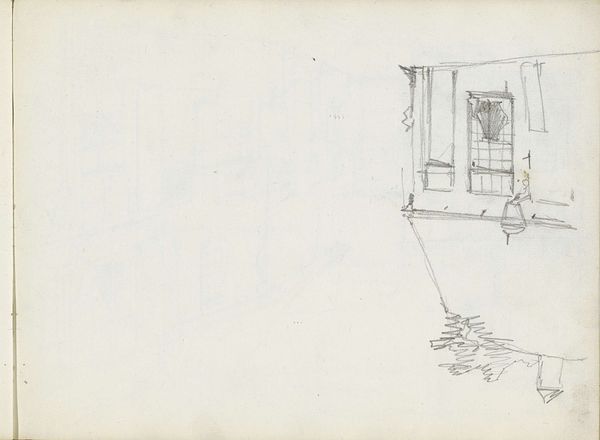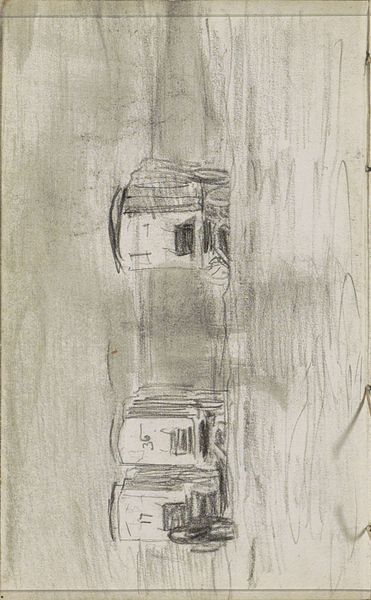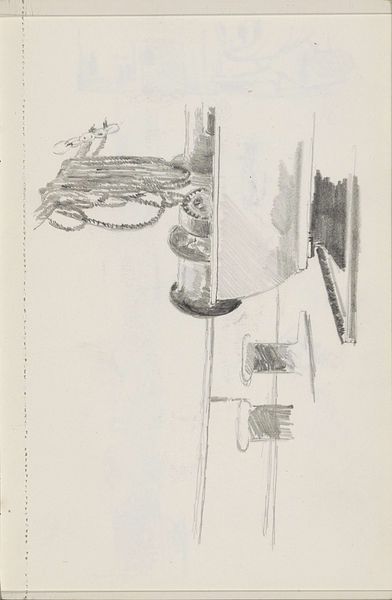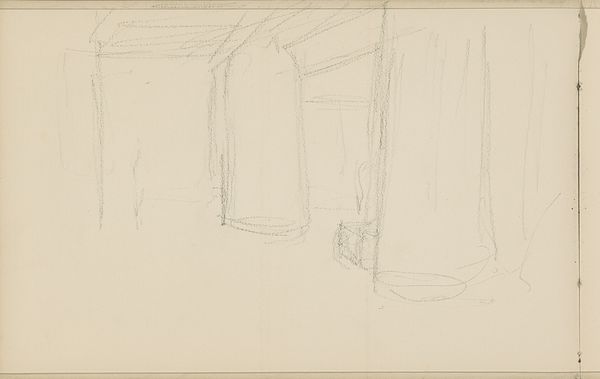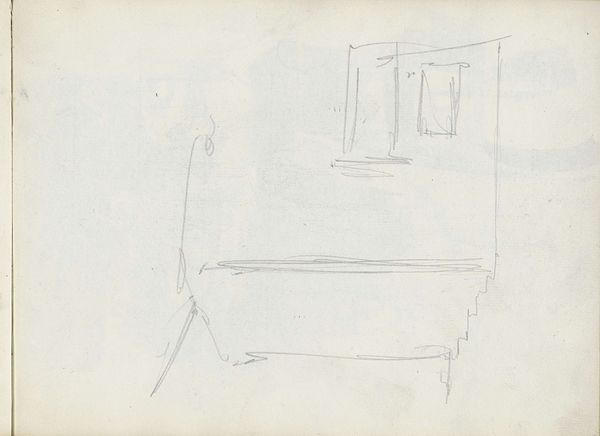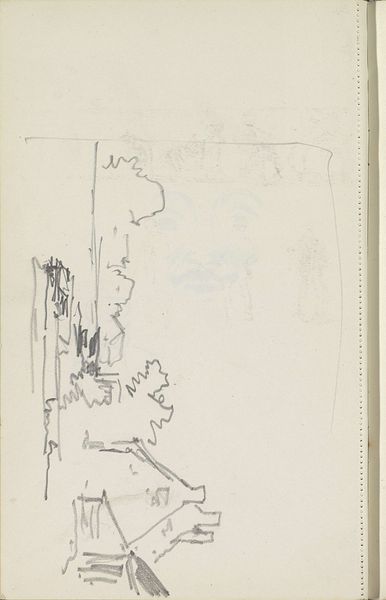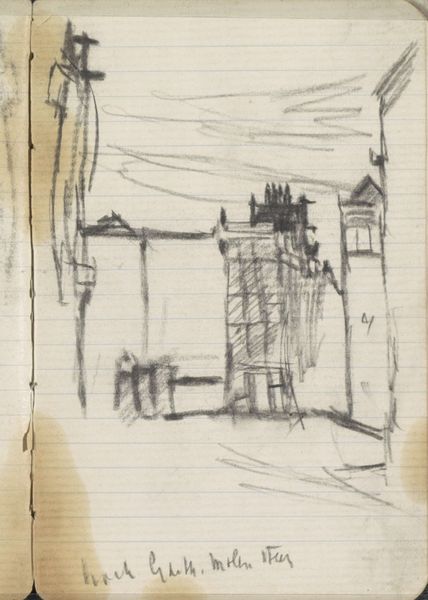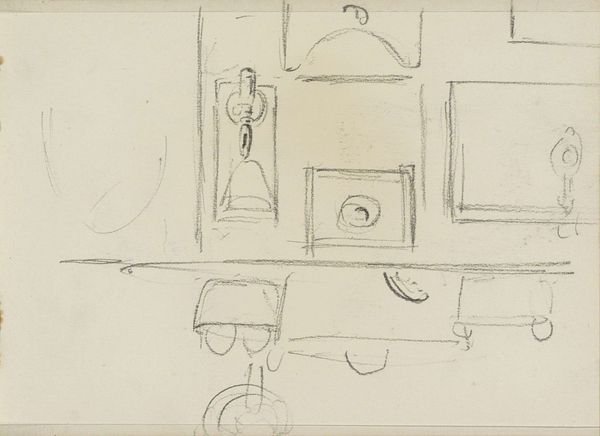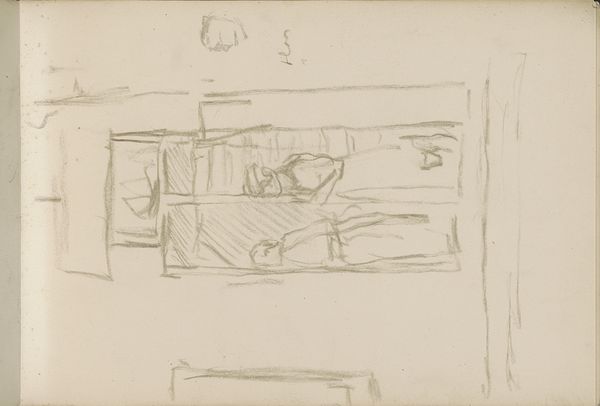
drawing, pencil, architecture
#
drawing
#
romanticism
#
pencil
#
architectural drawing
#
architecture drawing
#
genre-painting
#
architecture
Dimensions: 167 mm (height) x 112 mm (width) (bladmaal)
Curator: Christen Købke’s drawing, "From the Artist’s Kitchen in Rome," created circa 1838-1839. A modest scene rendered meticulously in pencil, capturing a slice of daily life. Editor: There's a lovely stillness to it, don’t you think? It's a very hushed, domestic space, like catching a glimpse of a private world suspended in time. Curator: Indeed. Notice how Købke utilizes linear perspective to define the room's spatial dimensions, drawing the viewer’s eye from the foreground details toward the softly illuminated window at the back. This creates a structured and clearly defined composition. Editor: I’m immediately drawn to the quality of light here. It’s faint, diffused, coming in almost shyly from the window, but still managing to suggest the heat of a Roman summer, maybe? You can almost hear the silence punctuated by the distant bustle of the city beyond that window frame. Curator: Consider how the textures are conveyed solely through pencil strokes. Købke renders the rough plaster, wooden beams, and various kitchen implements. The simplicity of the lines is quite elegant. Editor: Elegant but also…unpretentious. These aren’t stylized objects; they're humble, functional, imbued with a lived-in feel, aren’t they? Each carefully sketched pot and pan tells a story about daily practice and practical routine, an insight into his personal experience of living and working abroad. Curator: That domestic reality sharply contrasts with the conventional Romantic ideals of the time that were typically more invested in grandeur. Købke is presenting the aesthetic value of an otherwise humble scene. The structural rendering serves not only to document the scene but also to imbue it with a formal artistic quality. Editor: Precisely. I get the feeling that, for Købke, the act of looking closely at the everyday *was* an act of reverence, finding the profound in what might otherwise seem mundane. It’s a beautiful exercise in attention. I mean, looking at this sketch makes me think that Rome seeped in slowly, through the window light and the humble tasks of making a meal. Curator: His decision to elevate this common scene really challenges the Romantic era preference of grand historical or allegorical narratives, indicating the broader aesthetic possibilities latent in quotidian subjects. Editor: Absolutely. It's an ode to quietude, to slow observation, a radical act, if you ask me, for that time. This little kitchen transcends its function; it is not only where art is made, but it is art in itself. Curator: It reframes and emphasizes an alternative aspect of Romanticism by regarding everyday existence as profound. Editor: Right, well, now I am ready for an espresso. What better way to appreciate that shift from within the kitchen itself!
Comments
No comments
Be the first to comment and join the conversation on the ultimate creative platform.
